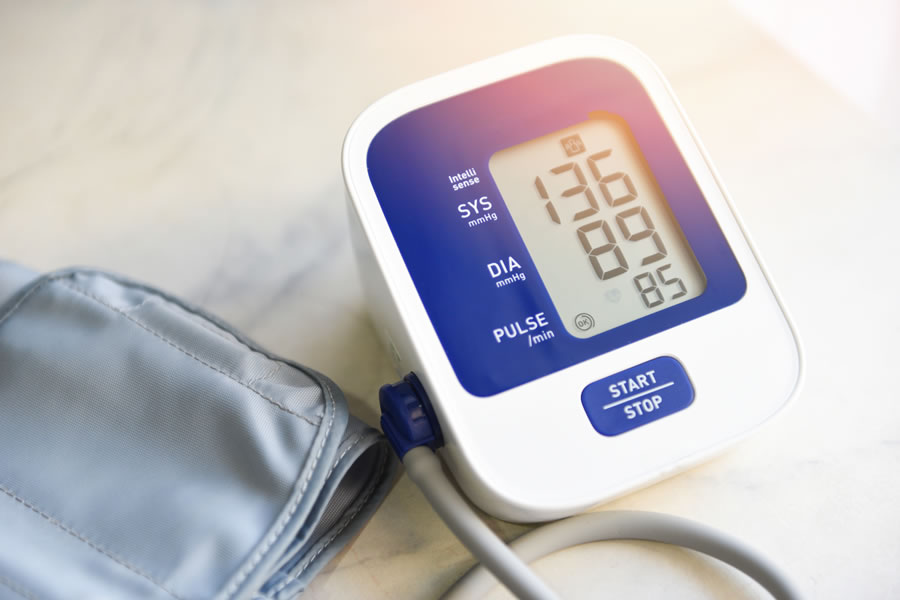
Hypertension, also known as high blood pressure, is becoming an increasingly pressing issue in the United States. Million Hearts, a national initiative co-led by the Centers for Disease Control and Prevention (CDC) and the Centers for Medicare & Medicaid Services (CMS), estimates that approximately 122 million adults, which is over half of the population aged 20 and above, are affected by this condition, which increases the risk for heart disease and stroke, two leading causes of death in the United States. However, statistics indicate that only one out of four individuals effectively manages hypertension, despite healthcare professionals advising their patients to take prescription medicine and to make lifestyle adjustments to mitigate the associated risks. A study analyzing Million Hearts data suggests that there may be another 14 million or more individuals who are unaware that they have high blood pressure, and are therefore not taking any measures to regulate their blood pressure.
Disadvantaged communities, which encompass individuals without access to quality healthcare due to geographical constraints, racial or ethnic inequalities, economic circumstances, or the inability to afford health insurance, constitute the predominant portion of those who are either uninformed about their high blood pressure or are not effectively managing it to reduce the risk of heart attacks, strokes, and other health issues such as problems associated with the kidneys and eyes.
Neglecting hypertension comes with a substantial financial burden. Adults with high blood pressure incur medical expenses that are nearly $2,000 higher per year compared to individuals with normal blood pressure levels. When one takes into account the overall cost associated with healthcare services, medications for managing high blood pressure, and the economic productivity lost due to premature mortality the economic burden associated with hypertension is estimated to be as high as $198 billion annually.
RPM Can Help Reach Underserved Communities
In order to address the health risks and financial burden posed by hypertension, the healthcare sector needs to explore innovative approaches to connect with marginalized communities. While routine medical checkups are an important first step in managing health issues, for many, this in itself presents a formidable obstacle due to financial constraints, lack of transport, etc.
The good news is that the advent of telehealth and digital health technologies now make it possible to bring quality healthcare services to individuals in their own home, removing the barriers to healthcare by making it more affordable and accessible to underserved communities. By utilizing digital health technologies, including blood pressure monitors connected to cellular networks and remote patient monitoring systems, patients can monitor and manage their health in the comfort of their own home and this data is transmitted via cellular networks to their healthcare provider, who can quickly assess whether the patient’s medication needs to be adjusted or whether lifestyle modifications are required, without the patient needing to visit a healthcare facility.
RPM a Valuable Tool for Managing High Blood Pressure
Remote patient monitoring (RPM) is proving to be a valuable resource for managing high blood pressure amongst the broader population. Centers for Medicare & Medicaid Services data reveals that in 2021, 51% of all remote patient monitoring claims were associated with primary hypertension diagnoses, while an additional 5.4% were associated with diagnoses related to blood pressure issues, complications arising from hypertension, and secondary hypertension.
Remote patient monitoring has also shown positive results when used to manage hypertension due to its ease of use. User-friendly technology for home-based blood pressure monitoring now makes it easy for patients to take daily blood pressure readings and share this data with their healthcare providers for rapid assessment and feedback. Patients are actively engaged in managing their own health, yet have a healthcare practitioner at hand to offer advice and make medical recommendations when necessary, leading to improved health outcomes.
Funding is Needed to Reduce the Disparities in Healthcare
Remote patient monitoring technologies are proving to be a boon for managing hypertension and hold great promise for bringing access to vital healthcare services to underserved communities, but one challenge still remains. While the majority of hospitals and other health systems have reimbursement codes to cover the costs of these services, federally qualified health centers (FQHCs), rural health clinics (RHCs), and community health centers (CHCs) do not.
These institutions, which primarily serve the communities most affected by hypertension, depend on grants to sustain their RPM initiatives. When initial programs, serving a limited number of patients, demonstrate positive outcomes, these organizations actively pursue supplementary grants or alternative funding methods to expand and establish a sustainable RPM program that can benefit a broader audience.
Considering the potential of remote patient monitoring (RPM) in managing chronic health conditions such as hypertension, more funding is desperately needed to ensure that established telehealth and RPM solutions are accessible to all.
Regulatory reforms are required to enable FQHCs, RHCs, and CHCs to bill for remote patient monitoring services in the same way that other hospitals and healthcare centers do. Such measures offer an effective means to ensure that individuals with hypertension receive the necessary care, consequently reducing the financial burden and health complications that ensue when a condition is left untreated or is inadequately managed.
Tapestry Health’s range of user-friendly RPM technologies, which include hypertension and other chronic health management devices, enable patients and their doctors to keep track of health data and to identify issues swiftly and take quick remedial action.
